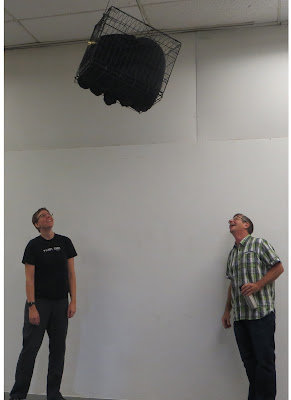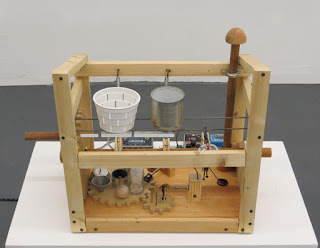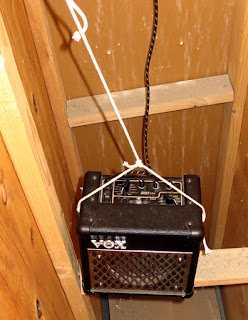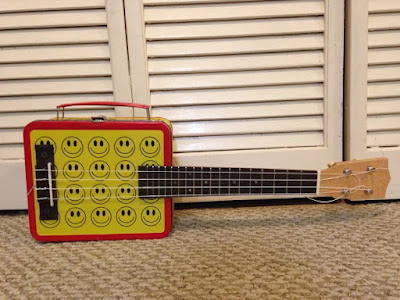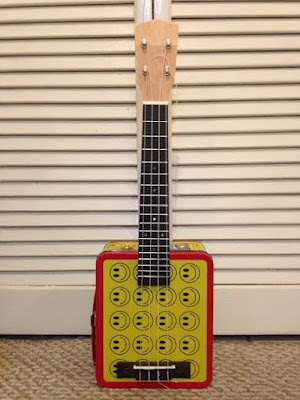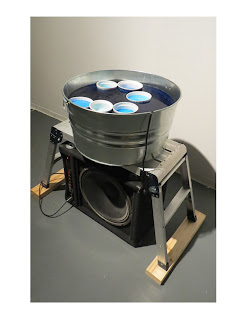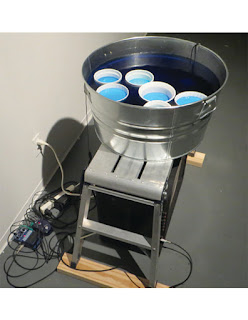This particular travel guitar has high mileage on it. The frets are pretty worn down but I won't worry about that now. The original black paint was worn thin and had faded to a charcoal gray. Cheap guitars are often painted in order to cover up the lack of a nice wood grain. My goal was to do a re-finish and some small upgrades so I can have a knock-around guitar that won't take up much space in the house. Something that I don't have to handle carefully and is on hand and ready to play when the mood strikes me.
The hours upon hours of sanding required was made more bearable by watching good movies, listening to music and generally zoning out. Ultimately all of the featureless wood grain was revealed. No surprise there.
I did a bit of experimental staining using a coffee and tea mixture on the back. It took multiple coats and did not give me the results I was hoping for, but still better than the tired, old, black paint. In the end the only staining that remained was on the guitar top and head-stock. The rest was spray painted a dark burgundy.
All new tuners and a natural bone nut were installed. Roadie now stays in tune much better than before and the bone nut has tightened up and improved the sound a bit.
Total investment for materials and upgraded parts about $20. Roadie will be a good platform for future upgrades like a string tree, a piezo pick up and what will be my first attempt at a re-fretting job. More about that later.

